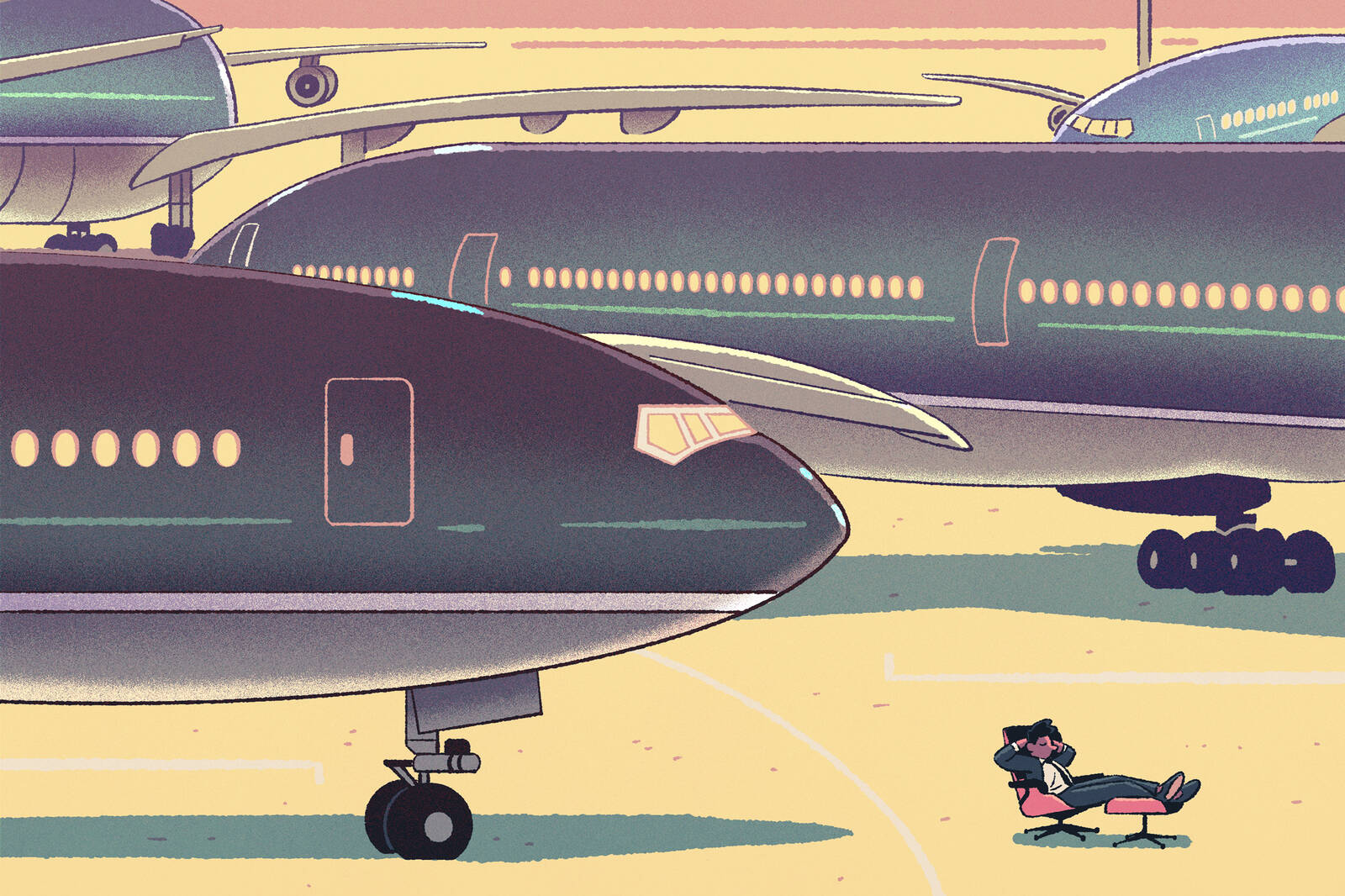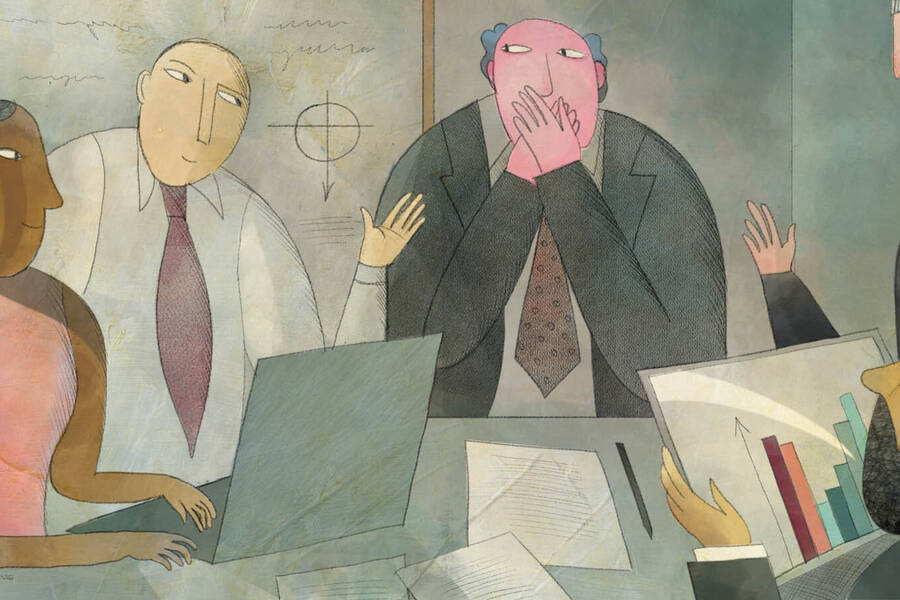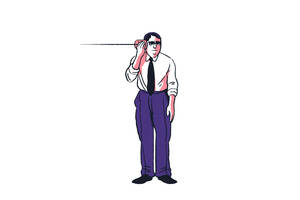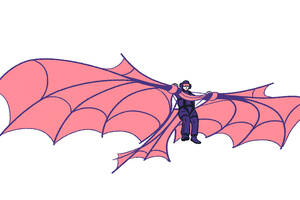Leadership Careers Oct 1, 2025
Leaders, It’s Time to Stop Being Cozy
Four tips from a CEO to get out of your comfort zone and help your company fly.

Michael Meier
In careers, as in companies, the temptation to cling to comfort is strong. Familiar routines, stable roles, and incremental change can feel reassuring. But Sanjay Khosla, a senior fellow and adjunct professor at the Kellogg School, argues that staying “cozy” comes with hidden dangers.
“Everyone has a choice in life. You can either be cozy—or you can fly,” says the former senior executive at Unilever and Kraft International. “My hypothesis is that it’s very dangerous to be cozy. You have to fly.”
Being cozy is dangerous because it lulls people and organizations into repeating what once worked, even as the world around them changes.
Khosla offers four lessons to help people recognize when they are getting too cozy—and how to start flying instead.
1. Focus on the future
One hallmark of being cozy is clinging to what worked yesterday. For companies, that often means holding on to products, processes, and structures long after they have ceased creating value.
He recounts the story of a multinational firm that had enjoyed years of success, only to fall prey to its own complacency.
“The company had become fat and complex,” he says. “There was a bloating of costs. More nimble competitors had started taking market share, using AI in a much more efficient way. This company was just so stuck in the past that it was afraid of anything new.”
Khosla urged the business to focus on a few priorities, put meaningful resources behind them, and stop activities that no longer added value. But the CEO pushed back, insisting that the group stick with familiar ways of working because “that’s the way we’ve always done things.”
“That’s a classic symbol of being cozy,” says Khosla. “It wasn’t laziness. They were very smart people. But they were clinging on to the systems and structures and the products and services that made them successful. Unfortunately, those were not as relevant now as they were in the past.”
The lesson is sobering: what worked yesterday may be the very thing that prevents growth tomorrow. So leaders have to be brutally honest with themselves about the life cycles of even their most reliable products and processes.
2. Dare to dream big
If getting ready to fly means looking forward and avoiding assumptions about what has worked in the past, it also means summoning the courage to act decisively. Flying requires setting audacious targets and empowering teams to pursue them.
To illustrate his point, Khosla describes how a stagnating B-to-B division of a large multinational corporation turned things around through a combination of ambition and commitment to success.
“Everyone has a choice in life. You can either be cozy—or you can fly. My hypothesis is that it’s very dangerous to be cozy. You have to fly.”
—
Sanjay Khosla
“Growth had stalled; market shares were declining,” he recalls. Recognizing that something had to change, Khosla challenged the division’s director to embrace a goal that sounded almost foolish: to double the business in three years.
“I dared them to dream big,” he says.
The leader initially panicked but quickly saw that meeting such an ambitious target would demand a different way of working. Instead of sticking to rigid functional silos, he asked the team to focus on their individual strengths and organize into small “tiger teams” around specific jobs to be done.
That shift marked the start of a new approach, one built on acting like entrepreneurs.
“Get it roughly right,” Khosla told the team. “Don’t get into analysis paralysis. Just get on and do things.”
Failures were accepted as part of the process, and the same spirit guided how they dealt with customers. Rather than chase every possible sale, the team concentrated on maximizing a few major accounts, including by setting up joint teams with them.
The results were telling. Over time, the division began to see traction and eventually beat its targets, which shows that even a struggling division can revive performance when leaders set ambitious goals and give teams the autonomy to pursue them.
“When you set ambitious goals and give teams the freedom to fly, amazing things happen,” Khosla says. “Ordinary people can do extraordinary things just by working together differently!”
3. Disrupt yourself (before others do)
To fly, you also need the courage to break your own rules. Khosla offers a personal story from his years at Hindustan Unilever, the Indian arm of the multinational consumer-goods group, which was facing intense competition in the detergent market.
The answer was to launch Wheel, a detergent brand with a very different marketing hook: the powder was produced in cement mixers rather than traditional factories, and its campaign was, as Khosla puts it, “gritty, earthy, unapologetically rural.” The initial presentation of the Wheel concept was met with disdain at Unilever’s headquarters.
The business model for Wheel was completely different from Unilever’s other detergents, Khosla says. It leaned into low-cost manufacturing, a very lean supply chain, and edgy marketing. Wheel was led by a small, entrepreneurial team that operated more like a startup than the main business.
“They thought we were crazy … because this broke every rule,” Khosla says.
But they pushed ahead, supported by a senior boss who encouraged them to test the idea despite internal resistance and, for Khosla and his team, real career risk.
“There was a lot of anxiety. I couldn’t sleep at night,” Khosla recalls. “Was that panic worth it, risking your career and the team’s career? I’m convinced there was no choice. We had to fly.”
The gamble paid off. The launch was a runaway success, the product was rolled out across India, and the model was soon copied and adapted by others.
The Wheel rollout shows that disrupting your own business model can feel perilous, but refusing to change often leaves a company on a path to decline.
“The upside of disrupting your business model is that you can unlock new growth,” Khosla says. “So while disruption feels very risky, that is where real breakthroughs come from.”
4. Gather diverse opinions
Of course, not every attempt to fly will succeed. Leaders should read every decision with an eye on when to double down and when to walk away. In the process, they should seek as much input as possible.
Khosla recalls the case of a business that was considering building a $200 million factory in an underdeveloped region of Brazil. It was a bold bet and far from obvious whether the company should commit.
The decision was reached through what Khosla calls a “Discovery Workshop,” or a series of discussions that begin by opening the floor to a wide range of ideas before then narrowing those ideas down to the most-promising options.
“It’s very dangerous to just leave it to the leader to decide,” Khosla says. Instead, Discovery Workshops bring diverse voices into the room without deference to hierarchy, with one important caution: it’s critical to make sure the discussion isn’t dominated by a small cadre of people.
When run well, these sessions help organizations decide whether to invest—or keep investing—in a project or redirect resources elsewhere.
In the Brazil case, a risky proposal to build an expensive factory was debated and, within a week, approved. The plant went on to become one of the company’s most advanced facilities. For local employees, the impact of the factory was profound.
“Discovery Workshops unleash the potential of people, unlock the strongest ideas, and turn debate into action,” Khosla says. “Discovery Workshops have become a way of working to break free from being cozy and start flying.”
Seb Murray is a writer based in London.



